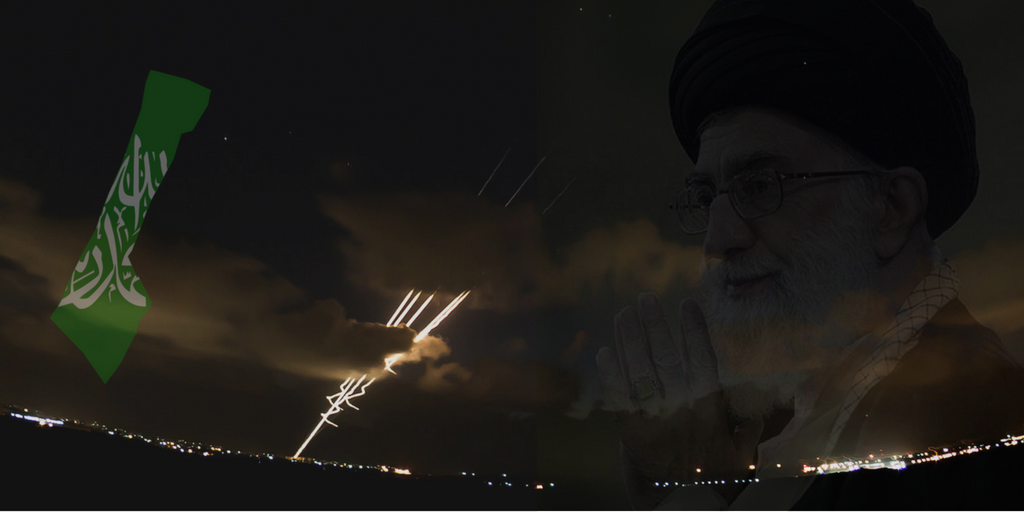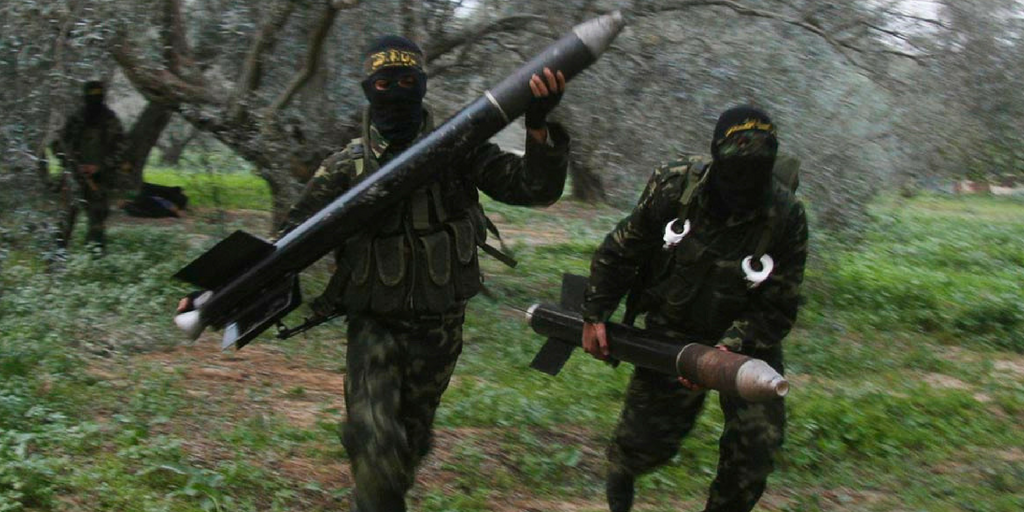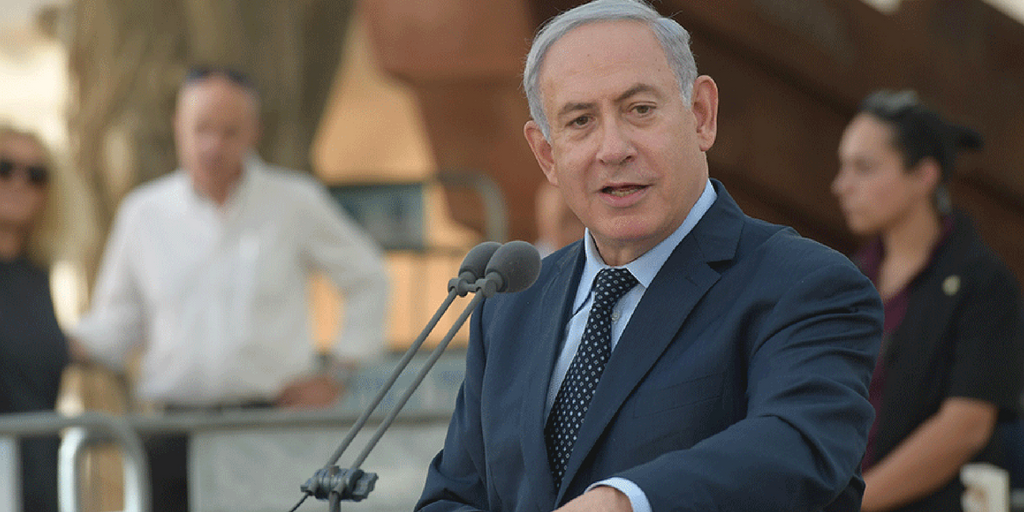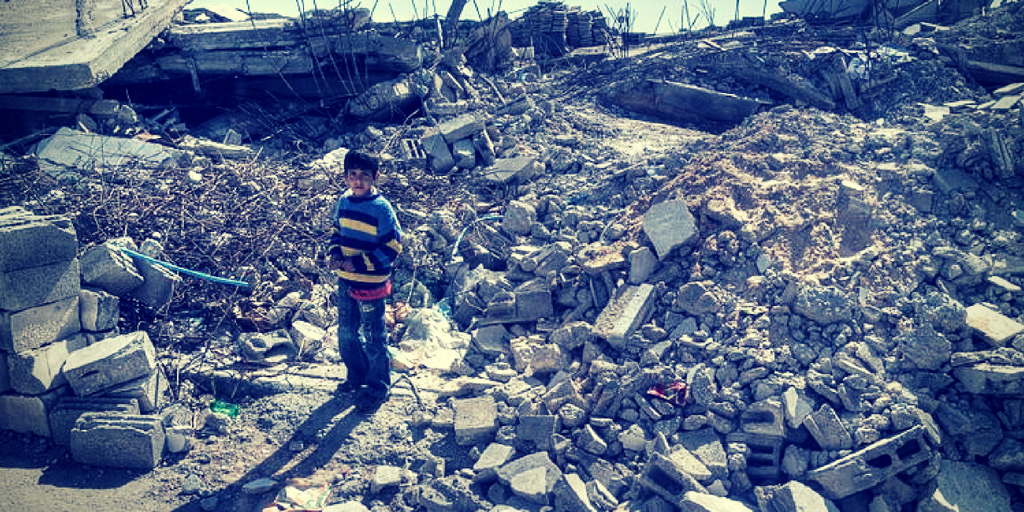The privation in Gaza is not the cause of the enmity towards the Jewish state. Quite the opposite! It is the enmity towards the Jewish state that is the cause of the privation in Gaza.
No cliché has dominated the discourse on the Gaza situation more than the perception of Palestinian violence as a corollary of the Strip’s dire economic condition – Prof. Efraim Karsh, It’s Not Gaza’s Economy, Stupid, June 3, 2018.
Many experts claim that an easing of economic conditions in Gaza…is the way to achieve political stability in a Gaza Strip ruled by Hamas. This is a fallacious argument. Prof. Hillel Frisch, Economic Benefits Will Not Bring Stability to Gaza , June 6, 2018.
It is refreshing to see what appears to be an emerging challenge to the mindless Pavlovian response, propagated by most of the Israeli media, to the horrific hatred and violence on display along the border with Gaza.
Soldiers turned sociologists?
Sadly, and perhaps, most disturbingly, it is none other than the IDF and the security establishment that appear to be one of its principal advocates.
Reflecting this hopelessly unfounded perspective was a recent report, headlined, “Israeli military recommends easing humanitarian situation in Gaza”, which cited a senior military source advising that “Israel should ease the humanitarian situation in Gaza and reach a long term ‘arrangement’ with Hamas”. A day later, this was followed by a similar report,” Army calls to lift some economic restrictions on Gaza, boost chances of quiet”, citing “A top official in the IDF’s Southern Command [who stated that ] Israel must take steps to ease the humanitarian crisis in Gaza, which would likely bring quiet to the Gaza region.”
The latter item provoked a brusque response from an exasperated talk-backer: “Sometimes I wonder if there are any sane people left in the top people. All Gaza wants [is] Jews dead and off the land and yet the army wants to give them the tools to do it…!”
Indeed, in recent years—perhaps due to the professors and political credos they are exposed to during their academic studies—it appears that many in the senior echelons of Israel’s security establishment have forgotten that they are soldiers, charged with providing military solutions to physical threats to the nation’s security and not sociologists, tasked with diagnosing the societal ailments of its sworn enemies.
Misleading malicious mantra
Perturbingly, the recommendations to reach an agreement with Hamas to alleviate the humanitarian conditions blithely ignore that Gazans did everything in their power to exacerbate them—repeatedly vandalizing and setting fire to the Kerem Shalom crossing, which provides vital gas and fuel and humanitarian supplies to the Strip. Indeed, during the ongoing events on the border, Hamas explicitly refused to accept humanitarian supplies donated by Israel, including medical equipment such as fluids, bandages, equipment for treating children and disinfectants.
Accordingly, to attribute the incandescent hostility toward Israel in Gaza to the dire humanitarian situation plays directly into the hands of Israel’s detractors. Indeed, as I have pointed out elsewhere it is, in effect, to be complicit with the enemy—endorsing its mendacious and malevolent narrative.
For it necessarily implies that, if only Israel would somehow initiate/facilitate an improvement in Gaza’s living conditions, the violence would subside. This not only reinforces the false claims that Palestinian terrorism is driven by Israeli-induced economic privation, but also that Israel bears the responsibility for such terror, which is, therefore, no more than an understandable reaction to hardship and despair, externally imposed by a cruel, alien “oppressor”.
This, of course, is not only to distort—but to invert—the realities on the ground.
Conventional wisdom and the inversion of causality
Last week I wrote: “… the penury in Gaza is not the cause of Arab enmity towards the Jewish state. Quite the opposite! It is Arab enmity towards the Jewish state that is the cause of penury in Gaza.”
Accordingly, I was gratified to see my diagnosis echoed this week, by Prof. Efraim Karsh, who categorically affirmed this inversion of causality that afflicts conventional wisdom “…it is not Gaza’s economic malaise that has precipitated Palestinian violence; rather, it is the endemic violence that has caused the Strip’s humanitarian crisis.”
Karsh, formerly of King’s College London, now director of the Begin-Sadat Center for Strategic Studies (BESA) is, to my mind, one of the most astute scholars of the Israel-Palestinian conflict.
In the past, he has torn to shreds the defamatory accusations regarding Israel’s alleged mistreatment of the Palestinian-Arabs during its pre-Oslo administration of Judea-Samaria. Indeed, he has meticulously shown how the socio-economic conditions of the Palestinian-Arabs soared beyond recognition during that period, outstripping those in many “unoccupied” countries in the Muslim/Arab world—only to disastrously deteriorate once control was relinquished to Arafat and his cronies. Elsewhere, he has excoriated the frightful follies and foreseeable failures of the ill-fated and ill-conceived Oslo Accords—and I would urge readers to familiarize themselves with his incisive insights on these matters.
“No causal relationship between economic hardship & mass violence”
In his piece this week, Karsh recalls that: “At the time of the September 1993 signing of the Israel-PLO Declaration of Principles, conditions in the territories were far better than in most Arab states…But within six months of Arafat’s arrival in Gaza (in July 1994), the standard of living in the Strip fell by 25%, and more than half of the area’s residents claimed to have been happier under Israel.”
Significantly, he notes: “…. at the time Arafat launched his war of terrorism in September 2000, Palestinian income per capita was nearly double Syria’s, more than four times Yemen’s, and 10% higher than Jordan’s – one of the better-off Arab states. Only the oil rich Gulf states and Lebanon were more affluent.”
With regard to Gaza, Karsh underscores: “…countless nations and groups in today’s world endure far harsher socioeconomic or political conditions than the Palestinians, yet none have embraced violence and terrorism against their neighbors with such alacrity and on such a massive scale.”
He aptly points out “…, there is no causal relationship between economic hardship and mass violence. On the contrary, in the modern world it is not the poor and the oppressed who have carried out the worst acts of terrorism and violence but, rather, the militant vanguards from among the better educated and more moneyed circles of society.”
So, as Karsh reiterates: “…it is not socioeconomic despair but the total rejection of Israel’s right to exist…which underlies the relentless anti-Israel violence emanating from these territories and its attendant economic stagnation and decline.”
Couldn’t put it better myself!
Right diagnosis, wrong remedy?
But it is not just that economic aid to redress Gaza’s humanitarian predicament would be ineffective. Worse, it would be counterproductive. For as Karsh’s BESA colleague, Prof. Hillel Frisch points out: “Economic largesse at this point would only augment Hamas’s resources, as it taxes incoming goods and aid. That money will be funneled back to its hard core through campaigns such as the March of Return.”
Accordingly, given the fact that Hamas would undoubtedly expropriate much of any incoming aid for its own nefarious needs, it stands to reason that persisting with such aid will only sustain its ability to continue its offensive action against Israel—thus sustaining the conflict and prolonging the suffering of the population.
This, of course, raises the trenchant question of what should be done.
It is here that I diverge from both Karsh and Frisch in my reading of what is called for to redress the problem. For while I largely concur with their diagnosis of the malaise, I have grave reservations as to their respective prescriptions of how to remedy it.
For in essence, both invoke comparisons with the defeat of Germany and/or Japan in World War II and the ability of the victorious Allies to remold formerly aggressive totalitarian countries into peaceable democracies.
Right diagnosis, wrong remedy? (cont.)
Thus, Frisch refers to “the total defeat of Nazi Germany, and its subsequent occupation and division by the winning coalition, [which] meant that the US and its allies could mold West Germany to their liking through denazification and democratic rule”.
In similar vein, Karsh writes: “Just as the creation of free and democratic societies in Germany and Japan after World War II necessitated a comprehensive sociopolitical and educational transformation, so, too, it is only when the local population sweeps its oppressive rulers from power, eradicates the endemic violence from political and social life, and teaches the virtues of coexistence with Israel that Gaza can look forward to a better future.”
Regrettably, both these learned scholars overlook one crucial element when it comes to dealing with—i.e. defeating—a recalcitrant adversary in the Muslim world today, which largely undermines the validity of any analogy with the fortunate outcomes and the defeat of tyranny in World War II. Indeed, it is one the US overlooked when it embarked on its “War on Terror” in Iraq and Afghanistan after 9/11.
Indeed, quite apart from the fact that to implement both Frisch’s and Karsh’s proposal, Israel would presumably have to retake and hold Gaza for an indeterminate period of time—to enable it to remold Gazan society and implement the required “comprehensive sociopolitical and educational transformation”, there are important differences in the geo-political structure of the situation prevailing in post-WWII Japan and Germany, on the one hand, and those facing Israel today vis-a-vis the Palestinian-Arabs, on the other.
These would gravely undermine the ability of any attempt to remold or transform Palestinian-Arab society in general, and Gazan society in particular.
Unlike Germany and Japan…
For unlike any prospective self-governing Palestinian entity, which sees itself unequivocally bound culturally, ethnically and religiously to the larger Islamic world, Germany was not surrounded by a swathe of kindred Teutonic nations—nor Japan by kindred Nipponic nations—which, driven by a radical Teutonic/Nipponic ideology, strove continually to undermine the stability and legitimacy of any peaceable regime that foreign powers might install.
This, however, was the case in both Iraq and Afghanistan—and is certainly likely to be the case for any self-governing Palestinian entity ,whether in Judea- Samaria or in Gaza.
Unlike defeated Berlin (and Tokyo), Baghdad (and Kabul) along with their environs, were continually assailed by Islamic insurgents, financed, armed and equipped from surrounding Muslim countries, to undermine any arrangement or undercut any resolution the victorious powers wished to implement and imperiling any government, not to their liking.
Clearly, this is very likely to be the case in the Israeli/Palestinian situation, with regional Muslim-majority countries constituting a virtually unending source of post-victory instability and incitement. Accordingly, because any attempted remolding or “sociopolitical and educational transformation” is likely to be impeded—even up-ended—by external sources of incitement and agitation, the only way Israel can ensure that Gaza (or Judea-Samaria) will not be taken over by some inimical radical regime is to govern these areas by itself.
But the only way Israel can govern these territories itself, without the need to rule over a recalcitrant alien ethnic group, is to remove that ethnic group from those territories.
What could be simpler or more self-evident??
The real humanitarian solution to Gaza’s humanitarian crisis
Clearly then, persisting with the current format of humanitarian effort will only exacerbate the humanitarian crisis. Accordingly, this effort must be restructured and redirected.
Indeed, the only durable humanitarian solution that can ensure Israeli security and relieve Israel from the burden of “ruling over another people”, is to generously finance the relocation/rehabilitation of the non-belligerent Gazan population to third party countries, and allow them to build more prosperous and more secure lives, outside the “circle of violence”, to which they will inevitably be subject, if they remain where they are—no matter what the level of humanitarian aid.
All we need now is leadership with sufficient political will, intellectual daring, and ideological commitment to undertake what must be undertaken.
Why would that be a problem??





